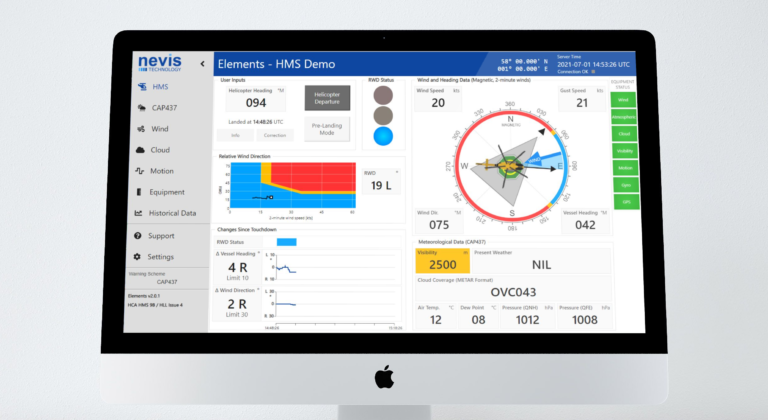Nevis Technology, a provider of offshore environmental monitoring systems, has become the first company in the world to achieve the Civil Aviation Authority’s (CAA) CAP 437 certification for offshore helicopter landing requirements for its Elements Helideck Monitoring System (HMS).
Nevis Technology, which was established just two and a half years ago, supplies its solutions to major companies in the UK, Australia, Brazil, Dubai and West Africa. The company’s four directors have combined industry experience of more than 60 years.
The company aims to combine software, technical and operational expertise to become the UK’s leading provider of offshore aviation weather systems. The newly-approved Elements HMS is central to the company’s growth. The system is targeted at moving offshore helidecks, of which there are well over 100 in the North Sea alone, and displays information which is critical in helping pilots decide on whether it is safe to land.
Elements HMS was fully developed in-house and is based on the Nevis’ system for fixed helidecks – Elements MET. Building on Elements MET, the new system features include helideck motion monitoring, on-deck relative wind monitoring and an output to drive helideck-mounted status lights.
Elements HMS is already up-and-running on several North Sea floating production storage and offloading installations, with further global deployments scheduled throughout the year.
Nevis Technology software director Phil Bellamy said, “The team has worked incredibly hard on the development of Elements HMS and I’m extremely proud of what we have achieved. Our system offers significant improvements aimed at improving safety across the offshore aviation sector and it feels great to directly contribute in this endeavor.”
George Lolic, who oversaw the deployment of Elements HMS on Dana Petroleum’s Triton and Western Isles vessels earlier in the year, added, “The installation and commissioning of the new HMS system was carried out in a professional manner without interruption to helideck operations and the offshore and onshore training provided by Nevis allowed for a seamless transfer from the old to new systems.”



